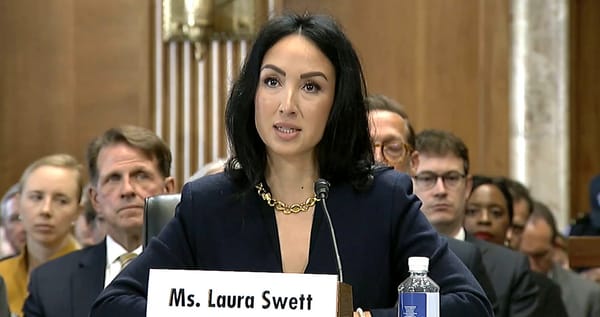Deborah Simpier: Big Telecom Isn’t the Answer to Bridging the Digital Divide
When the 4G networking protocol improvements rolled out, I was a Verizon Wireless dealer in a small town in rural America. The 4G marketing echoed today’s 5G promises of fast “fiber like” speeds and improved, “nationwide” coverage. 4G was going to revolutionize broadband. Verizon Wireless even offer
Deborah Simpier

When the 4G networking protocol improvements rolled out, I was a Verizon Wireless dealer in a small town in rural America.
The 4G marketing echoed today’s 5G promises of fast “fiber like” speeds and improved, “nationwide” coverage. 4G was going to revolutionize broadband. Verizon Wireless even offered a home internet product, called Home Fusion, that provided access with a small omni-antenna on the roof. But, these improvements came with infrastructure investments – investments that big carriers weren’t going to make unless there was enough population density to offer a reasonable return on investment.
Verizon’s investment to 4G here in rural Oregon was minimal and home access was expensive. When 4G did come to our little city nestled in the woods, it didn’t provide better access or blazing speeds, it was small improvements to those closest to the towers, a far cry from the big marketing promises of a wireless broadband revolution.
The infrastructure investments required for 5G are perhaps even greater than 4G’s build out, especially when we look at the Verizon and AT&T’s millimeter fixed wireless deployments.
A network capable of delivering Gb speeds either to the home or mobile handset will require a dense fiber network to many small cell towers just a few city blocks apart. That kind of network just doesn’t make economic sense to build in a rural environment where houses are often spread miles apart.
Other carriers, like T-Mobile, are focusing on the lower bands, such as 600 Mhz, which offer more penetration but much lower throughput speeds. We may also see an increased cost to the consumer because a lower bandwidth network cannot support many people with broadband speeds. This is something I saw happen when Verizon rolled out its Home Fusion product with unlimited service. They quickly retracted that offering as soon as people began to sign up and the network became crowded.
The move to 5G could even reduce coverage for those in very rural and marginal coverage areas. Verizon has recently discontinued activating 3G handsets and has been decommissioning 3G equipment, but not always replacing coverage in those areas, which leads to many people in the marginal coverage areas having no access at all.
For many of these people, this is their only access to communication and not having coverage can mean they can’t call 911 to get help when needed.
Where 5G deployments focus on urban areas, rural communities are providing access to more people with inclusive, resourceful, and innovative solutions like municipal or open access networks, wireless ISPs, and decentralized mesh networks. These solutions are more adept at utilizing federal grant money in a sustainable way as well.
In a recent conversation I had with USDA employees they mentioned that big telecom isn’t interested in applying for federal rural broadband grants that require two years of financial transparency or in re-investing to areas with little financial gain.
Inclusive community networks like municipal or cooperative ISPs take a different stance, keeping money generated local and providing for more democratic oversight. Decentralized networks are inherently democratic and agile, with many different local partners able to contribute and benefit, creating incentives for sustainable growth and reinvestment.
4G was not, it turns out, a revolution and 5G probably won’t be either. As is often said, if big telecom could make money in rural areas they would already be here. When it comes to bridging the digital divide, big telecom probably isn’t the answer. The future of rural access, instead, belongs to rural people who are blazing new trails of innovation and community powered networks, and that is a revolution I am excited about.
Deborah Simpier is co-founder of Althea.org.
BroadbandBreakfast.com accepts commentary from informed observers of the broadband scene. Please send pieces to commentary@broadbandcensus.com. The views reflected in Expert Opinion pieces do not necessarily reflect the views of BroadbandBreakfast.com and Breakfast Media LLC.










Member discussion